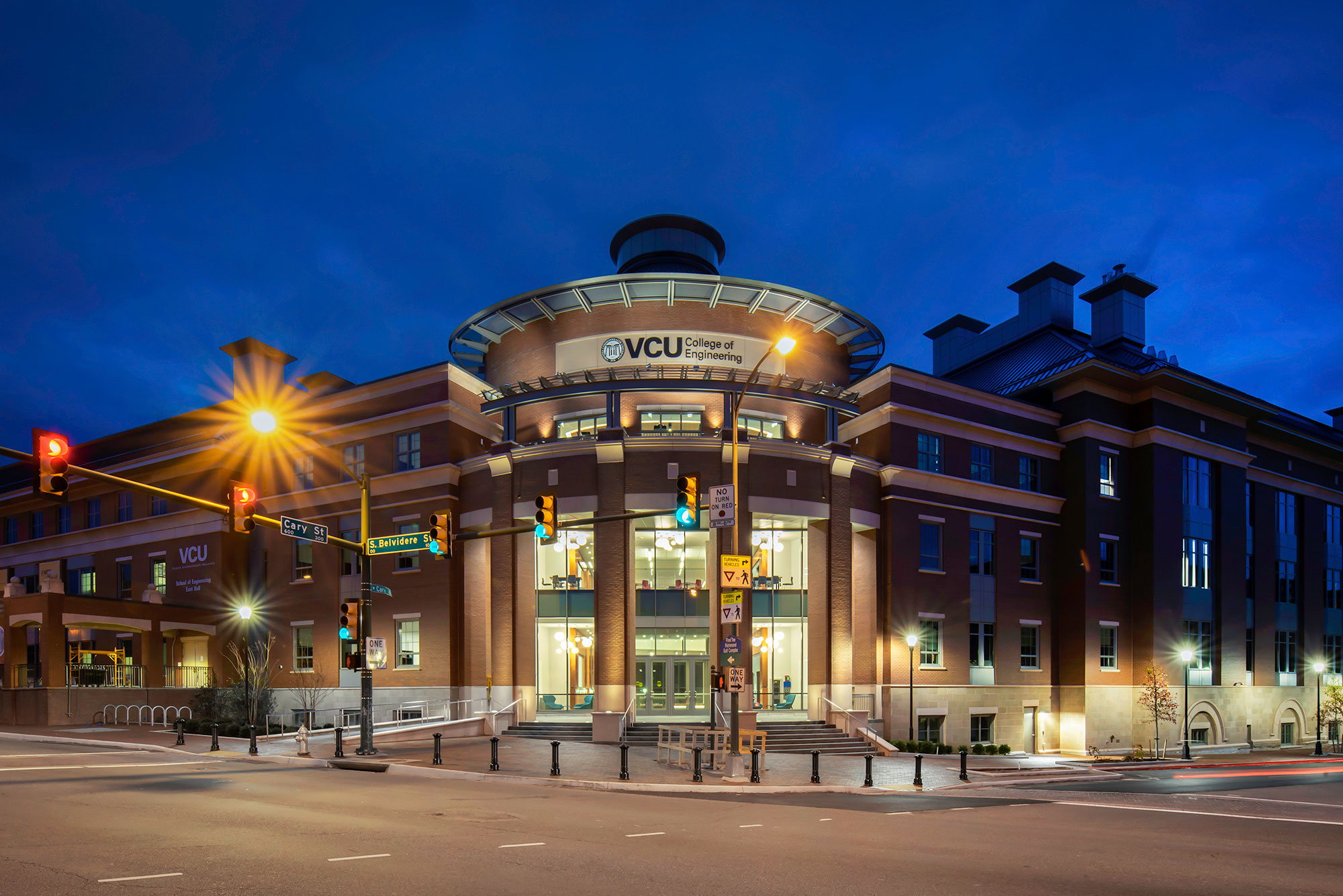Founded in 1996 as a public-private partnership, Virginia Commonwealth University’s College of Engineering has evolved into a regional and national powerhouse. Enrolling nearly 1,800 undergraduate and over 300 graduate students, the College offers degrees in biomedical, chemical and life science, computer, electrical, mechanical, and nuclear engineering, as well as computer science, and, in conjunction with the adjacent School of Business, a master’s degree in computer and information systems security.
With an ambitious vision for funded research and recognition as a Top 50 engineering school, Baskervill and design partner Goody Clancy were first engaged by the University in 2015. The task: a programming and planning study for a focused research building for the College of Engineering. The study grew out of the University’s 2013 master plan, which conceived of a sister building to the existing Engineering East and Snead Hall, home to the College of Business. Following the completion of the study, our team was selected to bring the Engineering Research Building (ERB) to life.
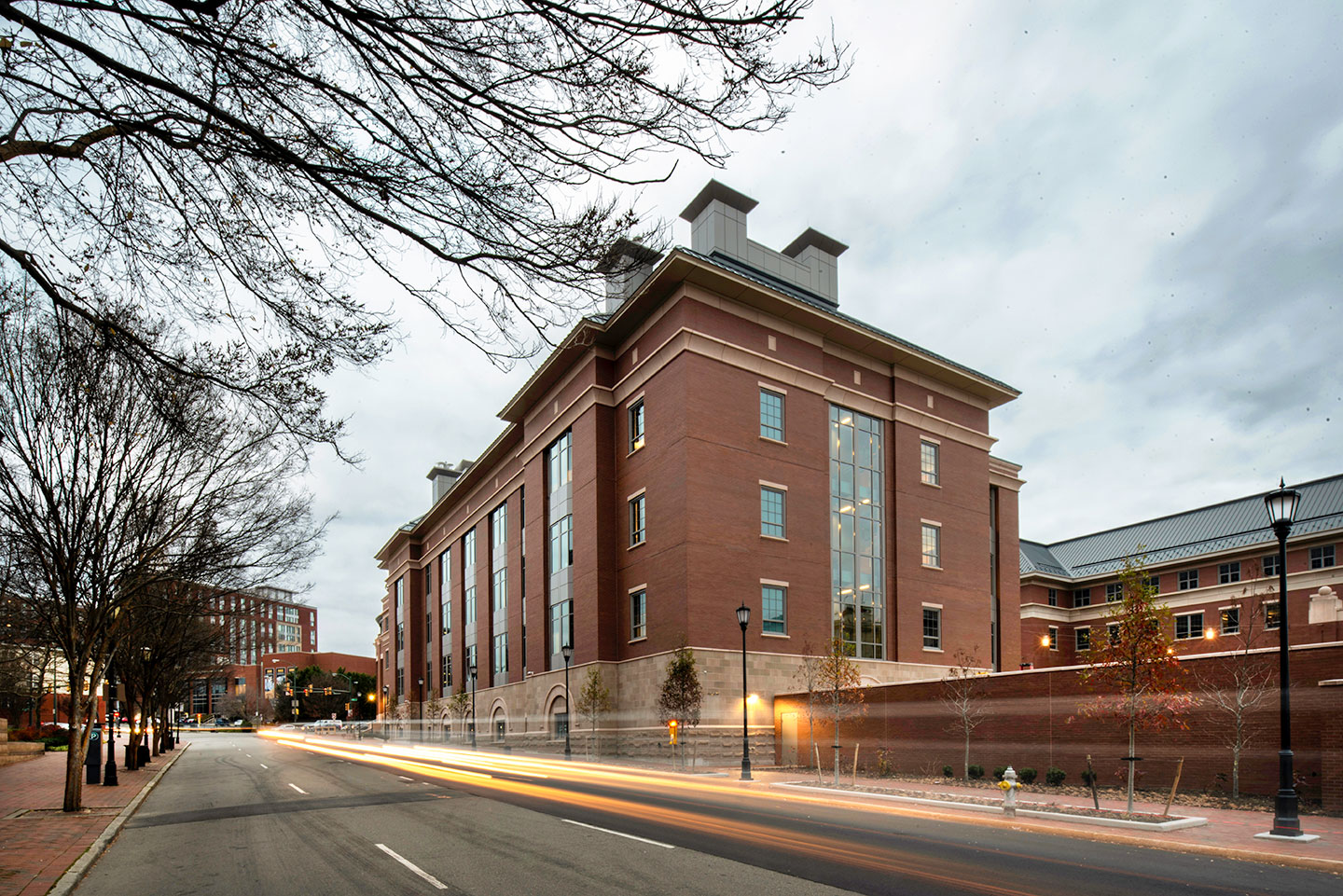
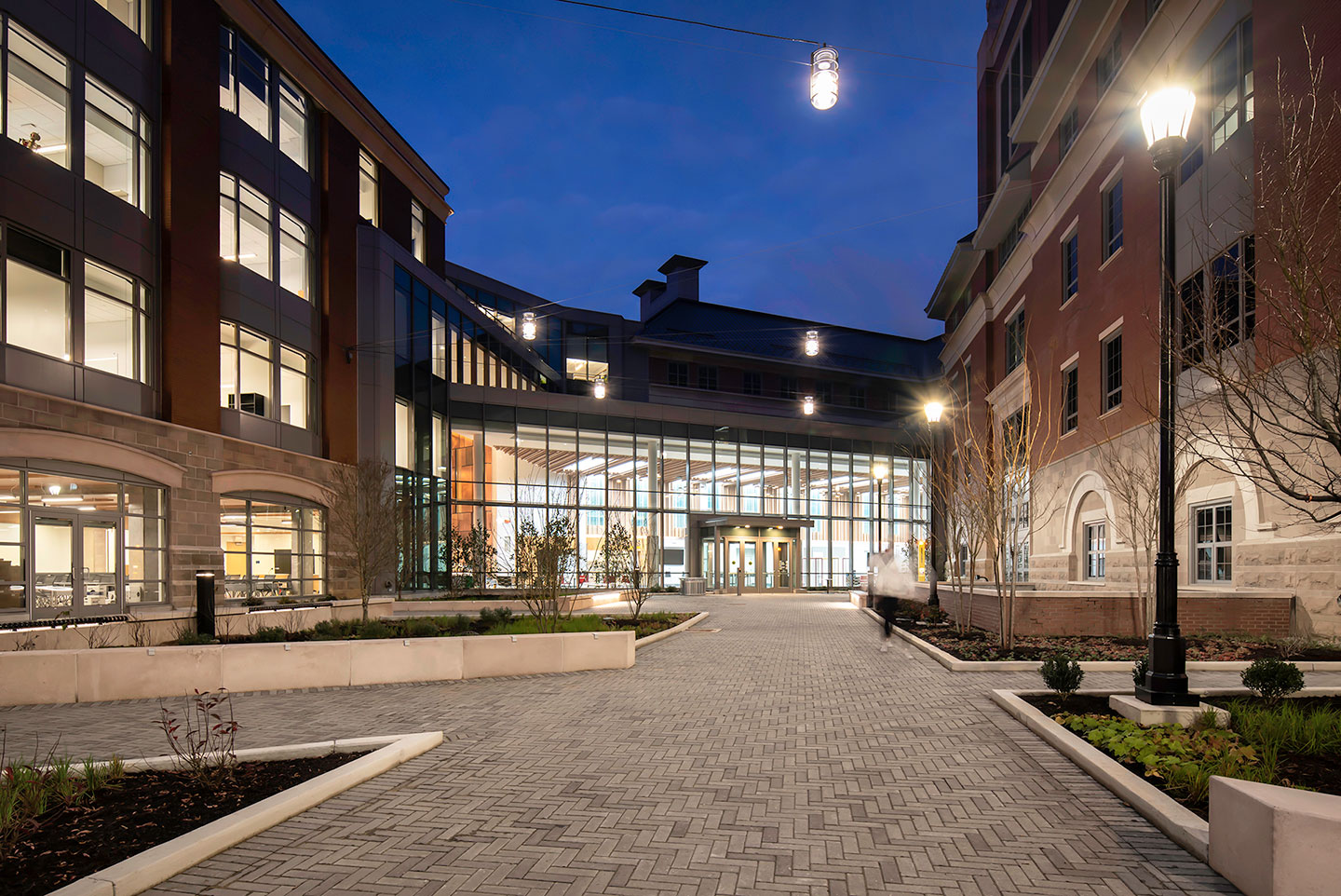
The design team had two major goals: first, to create a vibrant and flexible home for the College’s forward-thinking researchers, educators and innovators; and second, to complete the family of buildings already established in a way that was architecturally compatible with VCU’s broader campus language, leaning heavily on red brick and cast stone. The Collaboration Hub works to physically and socially unite the three buildings in a light-filled space that encourages interaction and engagement across disciplines.
“It just gives you a feeling of what engineering is all about. It’s solving problems. The whole engineering way of thinking is captured in this building.”
Barbara D. Boyan, Ph.D.
Alice T. and William H. Goodwin, Jr. Dean of VCU Engineering
The building itself is a testament to modern engineering, achieving LEED Silver certification. A priority for the University and the design team – including engineers from BR+A and lab planners from Page/SST – was creating high-performance lab spaces that made use of fewer resources. With a focus on energy use and carbon reduction, the team incorporated highly-efficient mechanical systems, employing demand-control ventilation, chilled beams, and a heat recovery chiller in the lab spaces to reduce needless airflow and prevent heat loss. Occupancy sensors and use of natural light help mitigate overall energy consumption.
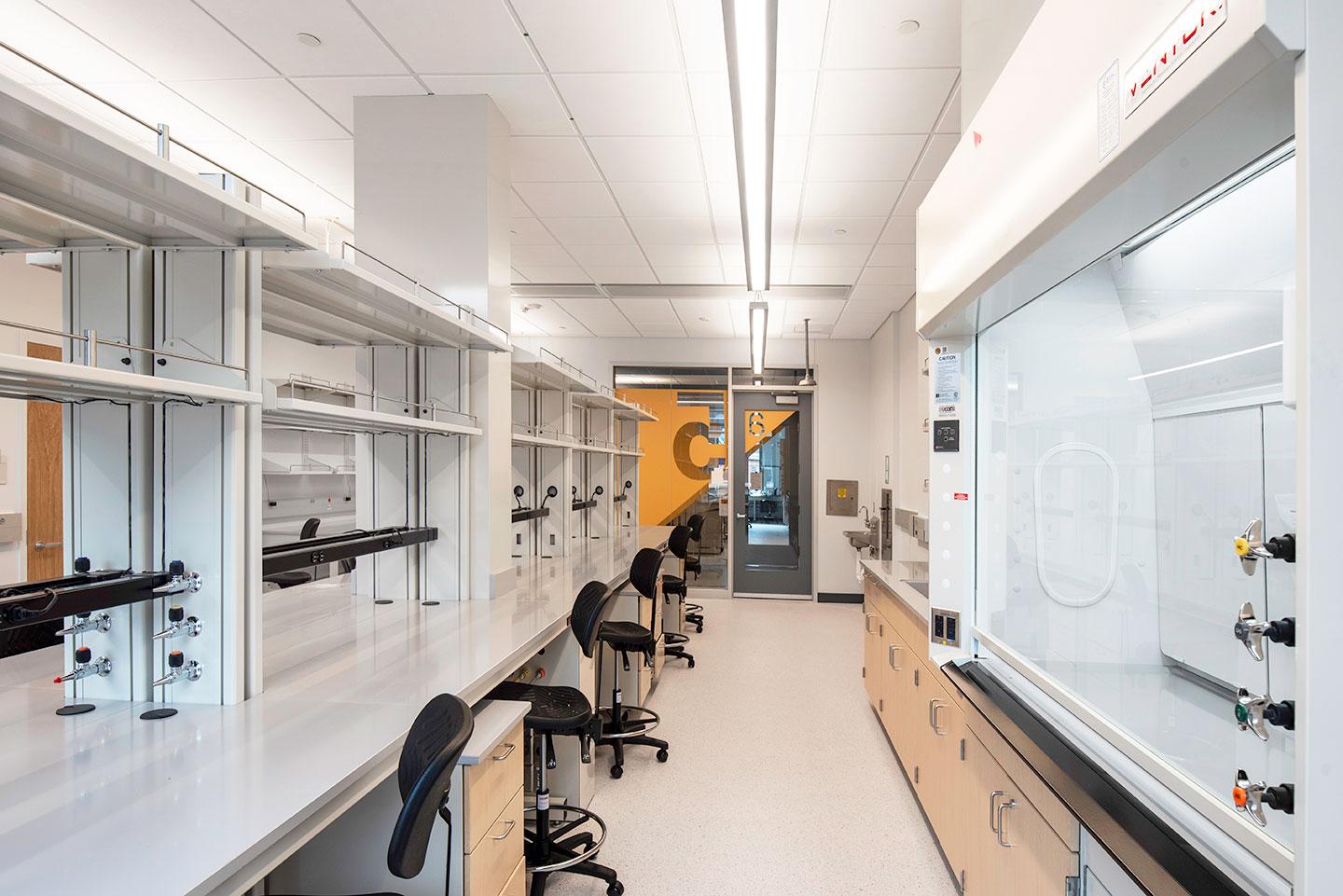
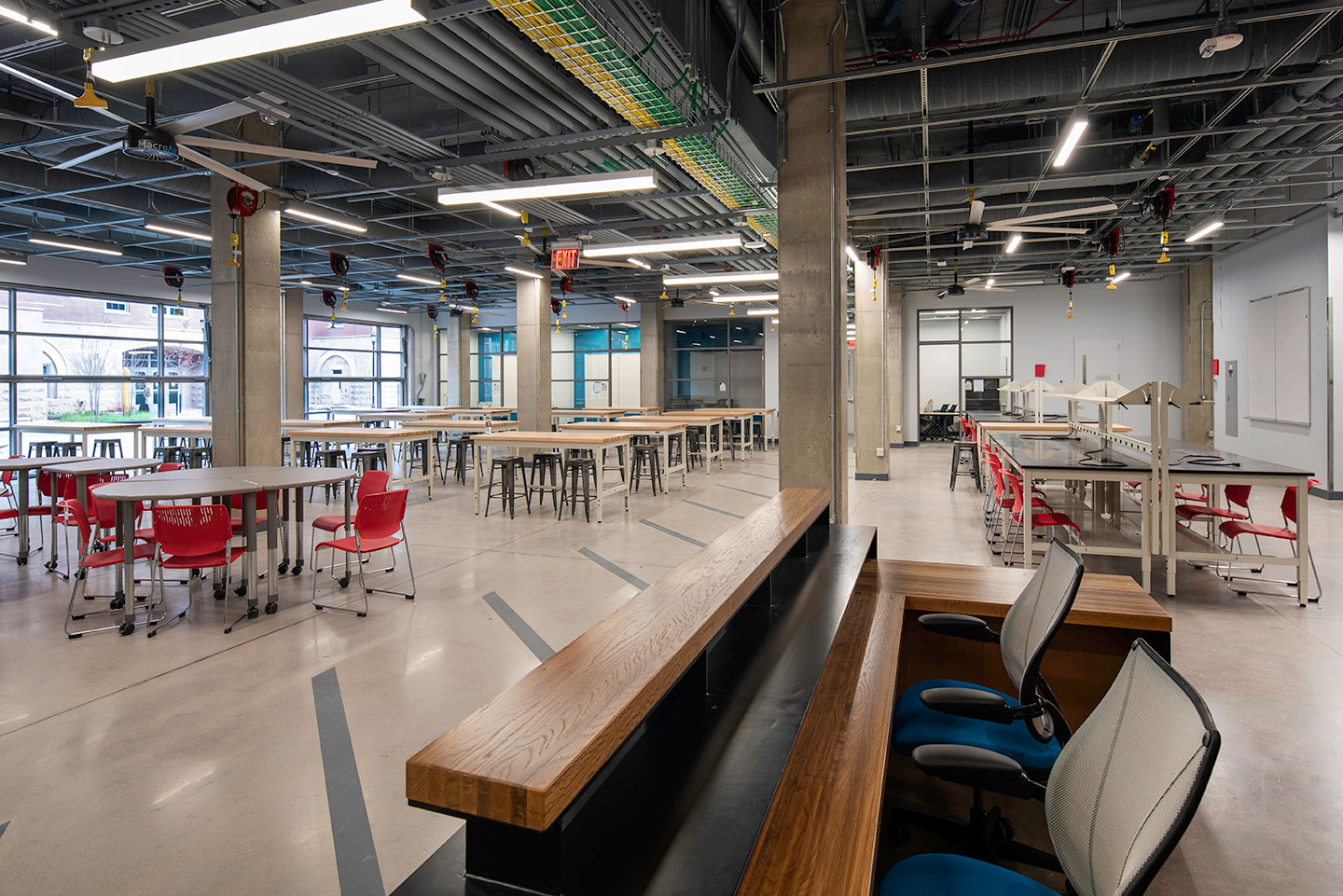
Unveiled in February 2021, the four-story, 133,000-square-foot Engineering Research Building significantly expands the college’s laboratory capacity for advanced research. Its specialized workspaces, including the Innovation Maker Facility, are equipped with resources for hands-on prototyping and experiential learning, all meant to reflect the real-world impacts of leading-edge engineering on commerce and the human experience. The building also allows VCU Engineering students to collaborate closely with industry partners on translational research— among them: cutting-edge entities focused in biomedical and pharmaceutical manufacturing, to cybersecurity, renewable energy, and much more.
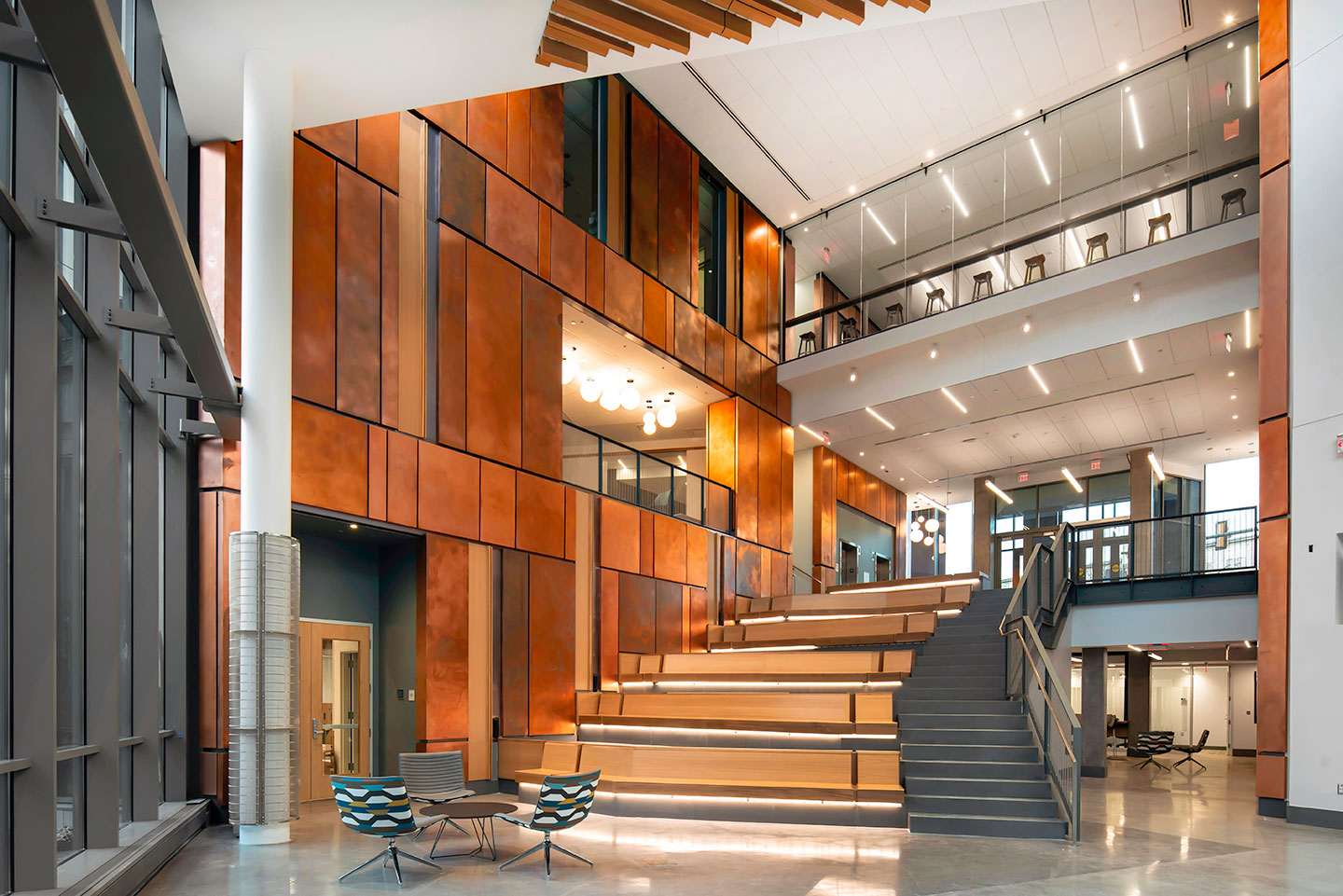
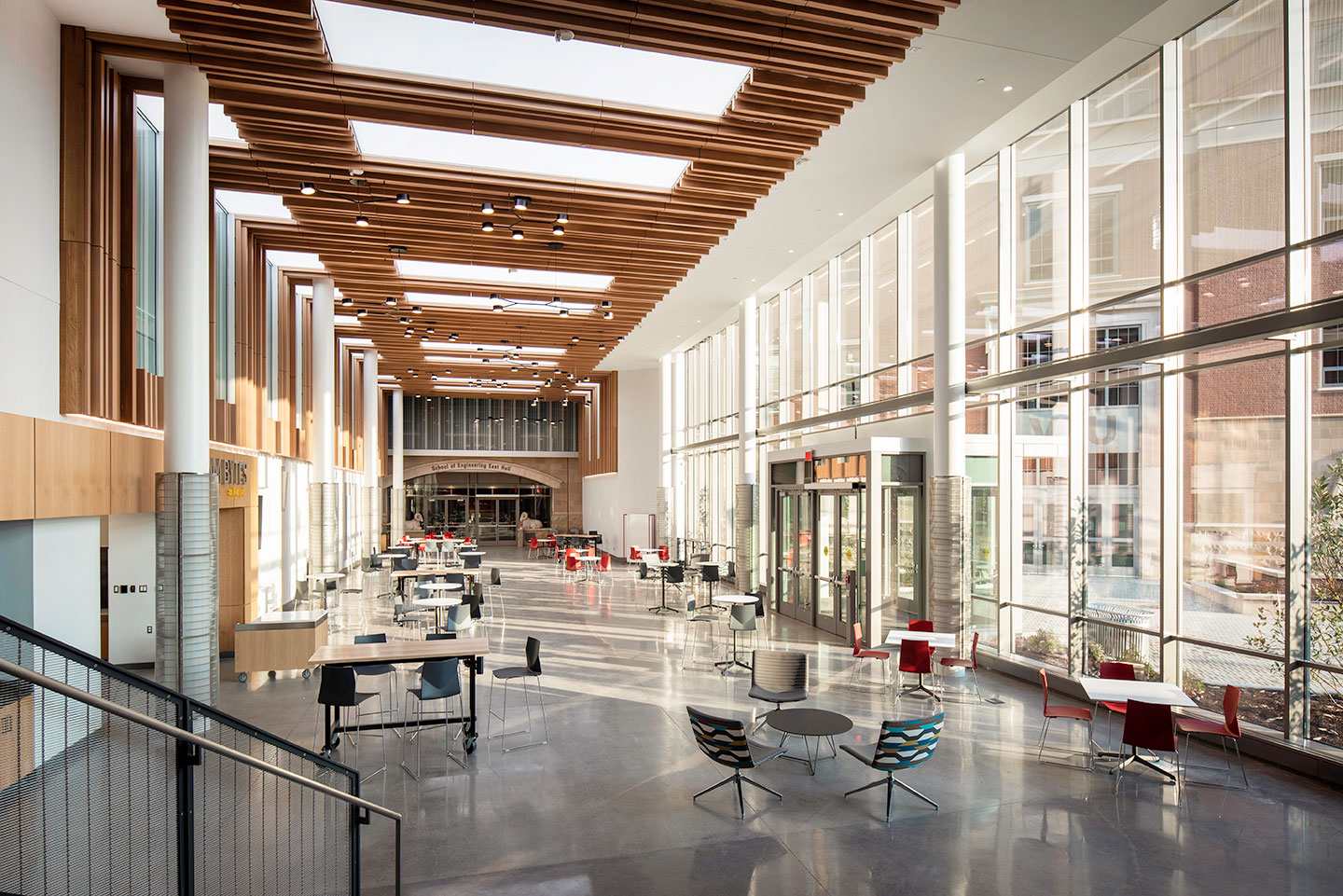
We work closely with our education clients to understand their distinctive learning philosophies, operational goals, and strategic plans. Because their learning environments aren’t one-size-fits all, our approach isn’t either. Learn more about our education expertise and see the distinctive solutions we’ve developed with learning in mind.


